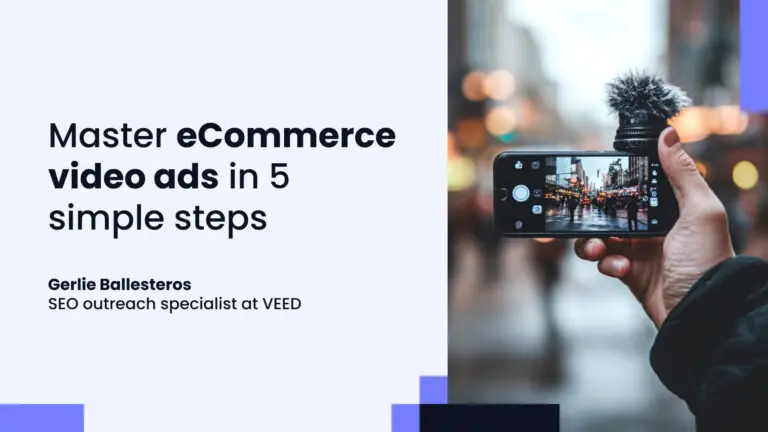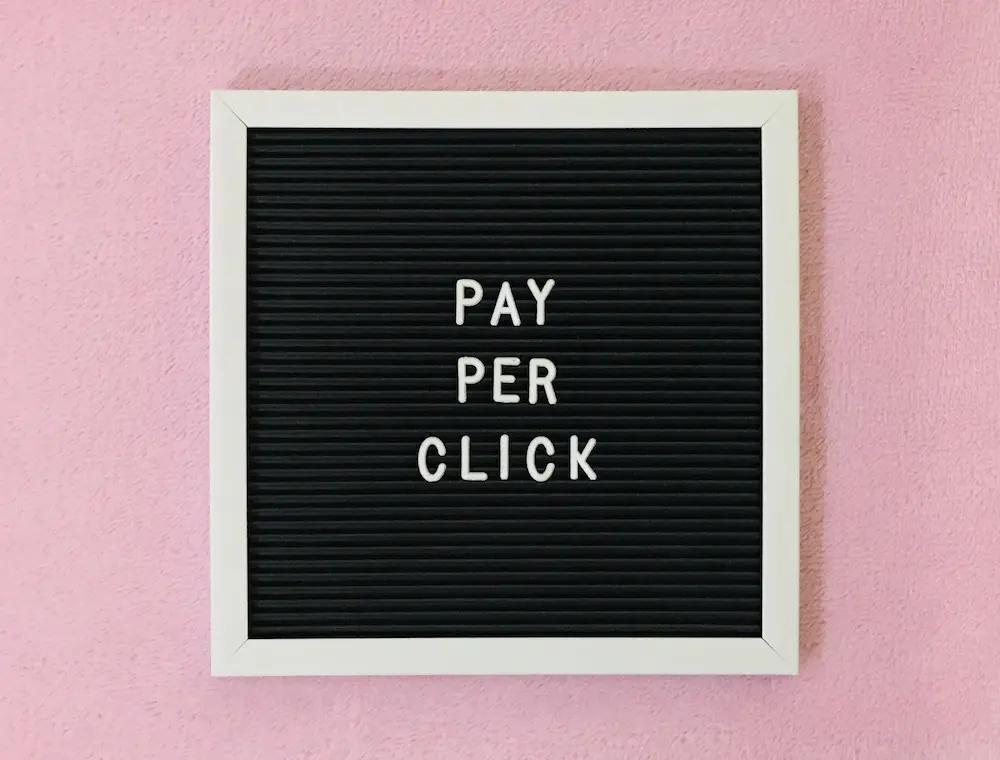If you’re an Amazon seller, you know how difficult it can be to manage your PPC advertisements. PPC, or pay-per-click advertising, is a digital strategy that a lot of businesses struggle to master. So if you’re wondering why you’re not seeing the results you want, don’t worry, you’re not alone.
There are plenty of eCommerce businesses that have trouble finding the right balance between exposure and cost-efficiency. It’s easy to lose money or even drive sales away if you don’t have the right strategy. With that in mind, it’s important to understand how to use Amazon PPC to benefit your business. We’ll explain the basics and take you through the pros and cons of PPC, while offering your valuable tips so you can grow your eCommerce business with confidence.
In this article, we’ll cover:
- What is Amazon PPC?
- How to use Amazon PPC effectively
- Benefits of Amazon PPC
- Downsides of Amazon PPC
- Funding for your Amazon PPC strategy
What Is Amazon PPC?
PPC stands for pay-per-click. It’s an online advertising strategy in which you pay a fee every time a potential customer clicks on an advertisement. Essentially, you’re paying Amazon to target customers, which could lead to more sales. It can lead to some great profits, too. For example, if your Amazon PPC is working correctly, the amount of money you pay for a click is nothing compared to the sale that follows. The ads are customizable, too, so you can decide exactly how much time and effort to put into it.
Amazon PPC ads vary in type. They offer Sponsored Product Ads, or SPA, which are the campaigns you see in between, to the right of, or below organic search results. This choice is the most popular. The second type is Sponsored Brand Ads, or SBA, which can be found at the top, to the left, or below the search results. With this, you can showcase your brand and logo. The third type is Sponsored Display Ads, or SDA, which can be displayed on both Amazon and third-party websites. On Amazon, they are seen on other product display pages.
In order to master PPC and maximize your profits, you’ll need to know how to use it effectively. The first step is to clearly define your goals. Then, refine your settings, provide a budget, choose a strategy, provide the landing page link, and create your ad. The ad will go live when you’re ready, and then you pay each time someone clicks the link. While the process isn’t complicated, building a profitable campaign takes time and effort.
How to Use Amazon PPC Effectively
So you’re ready to get started with Amazon PPC. Before you do, it’s important that you understand the steps you need to take to create an effective campaign. We’ll go over them in detail so you can get a better idea of what to expect. It’s a lot of steps to perform, but it’s well worth the time and effort it takes when you see your listing at the very top of that Amazon results page.
1. Set your goals and strategies
Subscribe to the eCommerce newsletter for
top industry insights
You should define your goals before you start putting a great deal of money, time and effort into an Amazon PPC campaign. Do you want to launch a new product? Are you trying to boost sales for existing products? Do you simply want to create awareness for your brand?
Once these questions are answered, you can start strategizing. For example, if you are launching a new product, then you want this ad to display frequently and among the ones near the top. You want it to be the first thing that people see when they’re searching for a product like yours.
2. Determine your budget
Your budget determines what you can do with your campaign. You don’t want to lose money on your advertising, so it’s important to keep an eye on how the campaign is faring. If it’s dipping in rank, then you need to make adjustments. These are especially true for SBAs, as they might have a larger keyword range. More keywords mean more room for error and falling down the list. If your budget can’t handle potential losses, then pick a safer route or PPC option.
3. Consider the product life cycle
When it comes to PPC strategy, everything depends on your goals or what you’re looking to achieve. Each product has a life cycle, meaning the natural progression through launch, maturity, decline, and then finally, withdrawal from the market. You should base your campaign on the stage your product is in and what you want it to accomplish at any given time.
For example, you want to choose an SPA campaign at the beginning of your product life cycle, so you can push it as much as you can during its hot streak. You can switch to another strategy as it falls out of the limelight or the trend fades. You can then move onto the next product that is currently on the rise. Always take these details into account when defining a strategy with PPC.
4. Create your campaign structure
You’ll likely be managing more than one product at a time during your PPC journey. That means finding a structure that is efficient and effective. Structures can involve campaigns, ad groups, match types, keywords, or targets. The popular choice is creating a campaign for each ad group. These involve both manual and automated advertisements, so you can reach as many people as possible. Don’t know the right one for you? Amazon has a lot of content dedicated to ad structures. Explore their recommendations and decide for yourself which one would be better for your business.
5. Choose your keywords wisely
Researching keywords that are performing well is a smart decision to make when creating your campaign. There are thousands of keywords out there, and only some of them will benefit you. How do you know which ones? Trial and error is an important aspect of this task. There are also plenty of resources out there that can help you with your keyword research such as Semrush and Ahrefs.
You can also set negative keywords, which keeps your ad from popping up when irrelevant or poor-performing keywords are used. This can prevent your product from falling down the list. Be careful with this one so you don’t remove a keyword that would have helped you rather than harmed you.
6. Monitor performance
Keywords fluctuate in their usefulness, just as products do, falling in and out of trends. In addition, algorithms can change and impact your ranking as well. That’s why your PPC campaign needs constant supervision.
Continuously research relevant, commonly-used keywords. You’ll need to track your insights in order to determine which alterations to make to your ad, whether that be the keyword settings, daily budget, content, or price. After making changes, give your campaign time to perform and adjust itself. PPC ads need time to work in order to provide you with new insights.
7. Automate your campaigns
The last thing we want to do is neglect our PPC, but it’s time consuming, which means you won’t always have the time needed to keep it running smoothly. Plus, it’s almost impossible to analyze multiple keywords and insights manually. That’s why Amazon PPC offers an automated option. Automation can increase your bids for high-performing keywords and lower the bids for less-than-optimal keywords. It takes a lot of weight off your shoulders, but remember that automation is just a helpful tool. It’s not meant to replace your own insights and decision-making abilities.
Benefits of Amazon PPC
There is a long list of benefits that come with using Amazon PPC. It’s a great marketing option, especially for those who don’t have a large advertising budget. Another great benefit is that it exposes you to Amazon’s massive audience.
While there are a number of Amazon sellers who have lost money with this strategy due to lack of knowledge and careful planning, it’s definitely worth the time it takes to research and experiment. Your business has the potential to generate some great revenue. You never know how much you can accomplish until you try. Here are some of the pros of using Amazon PPC in your marketing strategy.
1. It brings you more exposure
Exposure is a great reason to advertise with Amazon PPC. After all, people won’t buy from you if they don’t know you’re there. Amazon is the largest online retailer in the United States, so having an ad on Amazon is a win.
So, what does an Amazon PPC ad look like? When you search for an item on Amazon, the listings at the top are often marked “Sponsored Brand”. That’s an example of a PPC ad. It’s a great spot to be in, as people are more likely to click the products that show up first. They don’t want to scroll for hours, so getting your product to appear at the top of the results is a great way to get potential customers to your page.
2. You’ll reach relevant customers
With traditional advertising, such as digital billboards and radio ads, you hit a large consumer base. Not all those people are interested in what you have to offer. Amazon PPC, on the other hand, allows you to target relevant consumers by selecting age, location, gender, and even language. This means less shouting into the void and more conversations with interested parties. You can even choose the date and time that you send the ad out. This is especially helpful for seasonal businesses.
Did you know that you can also re-target customers? If someone has already bought from your store, the algorithm will send your new ad their way. They’ll be reminded of the great experience they had with your store. Don’t forget that a large portion of eCommerce revenue comes from customers who have already purchased from your brand. So, build your community with targeted advertising.
3. It improves your ranking
Popular content
- 14 strategies to improve your eCommerce business’s financial health
- 50+ ChatGPT prompts to elevate your eCommerce business
- A guide to pricing your product on Amazon
- 5 marketing metrics all eCommerce businesses should track
- All about Amazon PPC
If you’re somewhere near the bottom of the organic rankings page, then you probably don’t get that many sales. Sending Amazon PPC ads into the digital world can improve your ranking dramatically. If you’re an Amazon seller with limited sales history and few reviews, you’ll have a hard time reaching the top organically.
When you reach the top of Amazon search results, you’ll most likely succeed in getting more sales. As we’ve said before, people don’t like scrolling through loads of results. They usually click the options near the top, even if there is a better deal at the bottom. Once you are able to generate more sales, you’ll likely start to receive more reviews, too. Having a larger number of reviews on your product page has been shown to increase your conversion rate. Therefore, improving your ranking can help you in more ways than one.
4. You get insights delivered from Amazon
Amazon PPC delivers helpful insights so you can adjust your settings to better fit what your customers are searching for. You’ll get to see what type of consumer is searching the list and where they are searching from. This allows you to make vital decisions regarding your campaign and your other non-Amazon-related campaigns, as well. Do you need to change the content? Perhaps your title, details, or pictures aren’t working well.
It’s an experiment that needs constant trial and error in order to find the perfect combination for your current consumer. However, once you find the perfect combination, it won’t be perfect forever. Times, trends, people, and even algorithms change, so you need to change with them.
The insights you receive from Amazon allow you to review profits and losses, as well. This is a great tool for comparing yourself to the competition. If people are clicking on your product but not converting, where are they going? Does someone else have a better price or offer a product of better quality? Or maybe they have a better headline?
If you can’t figure out how to get people to convert, then you’re only losing money. That’s why it’s important to review your insights carefully, test your adjustments, and proceed according to the results.
5. You’re able to reach buyers, not viewers
One of the great things about selling on Amazon is that people who visit the site are already prepared to make a purchase. This is already a huge advantage compared to social media and even Google. All you have to do is catch the eye of customers looking for your product.
Therefore, in order to set yourself apart from the competition, you should do your best to make your content eye-catching. Pictures, details, instructions, videos, and discounts are a great way to encourage them to click the “buy now” button. If creativity is not your expertise, you may choose to hire a professional wordsmith and graphic designer when it comes to creating the campaigns and landing pages. A well-worded headline and product description or well-designed video can make all the difference in a customer’s opinion of your brand.
6. You only pay for clicks
The best part of the Amazon PPC model is that you only pay when people click on the links. That means that if they only saw your ad but didn’t click, which is called an impression, you don’t have to pay. This is beneficial to your insights and your advertising budget. Although this method can be costly, it is fair. There are no sign up costs, flat rate fees, or even subscription fees. You can adjust your PPC spend to the amount you can afford as a business, allowing you to test and play with it before committing to a large sum.
Downsides of Amazon PPC
After reading about the benefits of Amazon PPC, you may be ready to get started. However, there are a few cons to consider, too. PPC isn’t for everyone, and it’s a good idea to understand both the positives and negatives involved.
It takes a lot of effort to get it started and even more time to maintain it. Keywords and trends come and go, which means you’ll have to update and adjust it throughout the process. In the end, it doesn’t guarantee sales, either. With that said, let’s discuss the cons of Amazon PPC, so you can make an informed decision of your own.
1. Poor planning means poor ranking
If you haven’t done your research, your Amazon PPC campaign will likely fail to bring you the results you want for a few reasons. Your content may not be all that it can be. If you’re not the best with creativity or the industry’s wording requirements, then you may need to hire someone to help, or even create an advertising team to handle this for you. Otherwise, you’ll have to do a bit more research on what a good campaign looks like. Another issue could be your SEO. The algorithm could be passing over your ads or labeling them as irrelevant if you don’t have the right keywords or strategy. This automatically sends you to the bottom of the list.
You’ll need to adjust your campaign one step at a time, as you don’t want to confuse return customers with too much new information. However, if you don’t make adjustments to your failing PPC campaign, you’ll lose time and money. Even a poorly-done campaign takes many hours to create and requires some capital to get off the ground. Therefore, do your research so your campaign works well the first time around.
2. It’s time consuming
PPC campaigns take a lot of time to create, optimize, and maintain. There are many different time consuming elements that go into your campaign including content creation, scheduling, placing bids, keyword research, and more.
If you’re looking to spend money on labor, you could do everything yourself. However, you’ll have to spend some time learning about the tools you need, especially on a tight budget. If you’re overwhelmed with orders and campaigns and have some extra working capital in your budget, you may be able to hire some help.
3. You risk losing money
An Amazon PPC campaign can fail if you neglect to bid on the right keywords. Keyword bidding is the term used for how much money you are willing to spend for ad placement based on a specific keyword. Some cost more than others, and overall it’s a bidding war between the other companies. When you set your budget, and a certain keyword is on your list, another company with a higher budget and the same keyword gets priority over you.
When you don’t have a high budget, you can get overlooked, but that doesn’t mean you save money. You’ll still spend the same amount that you planned, but you’ll get lower results than you wanted. Therefore, companies with high advertising budgets dominate this system.
4. Clicks don’t mean sales
The truth is that clicks don’t mean sales. They are more promising than impressions, but in the end, it’s still up to your product page to make the final sale. That’s why proper wording, titles, details, pictures, and videos are immensely important.
That being said, if you don’t have a good, high quality product, you won’t make sales. Make sure you thoroughly research products before choosing what to sell. You should try to choose a product that is priced competitively, is of good quality, and for which there is plenty of demand,
Funding For Your Amazon PPC Strategy
Amazon PPC is an important aspect of your success on Amazon, but it can also be costly. It takes both time and money to get your campaign off the ground. If you’re already scrambling to find the funds to keep your product in stock, putting aside even more working capital to bid on keywords might be more than your bank account can handle.
That’s where 8fig comes in. We provide Amazon sellers with funding for up to 90% of their supply chain costs, which includes marketing. Not only that, the 8fig platform gives you the tools you need to plan, manage, and fund the future of your business.
Ready to find out how 8fig can help you grow your business up to 2.5x faster? Sign up for a Growth Plan today!
Subscribe to the eCommerce newsletter for
top industry insights
to our blog
Read the latest
from 8fig

Video ads can make or break your eCommerce success. Learn five essential strategies to create high-converting campaigns that captivate and convert.

Crack the code to funding your eCommerce business with this step-by-step guide, and learn how to secure the capital you need to grow while staying on top of your strategy.

From managing cash flow to optimizing expenses, this guide offers actionable insights to secure your financial future. Explore the essential steps to drive profitability and long-term success.
